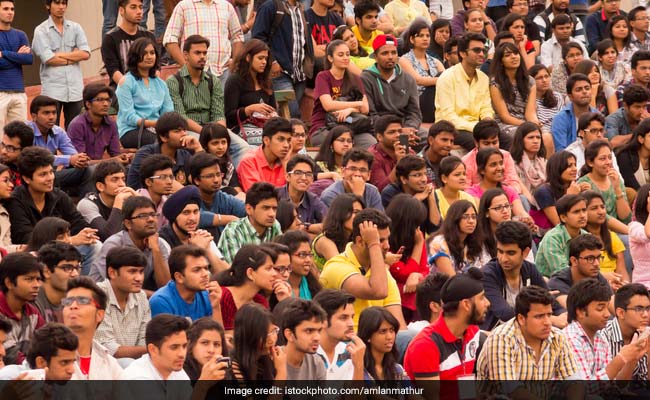
Indian students continue to prefer countries like the US, the UK, Australia, and Canada for pursuing higher education. According to the Indian Student Mobility Report published this year 2024, approximately 10.3 lakh Indian students are studying abroad. Of them, 8.5 lakh are in the aforementioned four countries, and they spent nearly $34 billion in the 2023-24 academic year. The number of Indian students in the US has seen an astounding rise of 35% in just a year. As per an Open Doors Report, last year, as many as 268,923 Indian students - an all-time high - moved to the US to pursue higher education.
The trend is puzzling given the precarious visa conditions in these countries and the problems faced by many in finding internships or good jobs. The US, the UK, Australia and Canada have tightened their visa regulations in recent years to curb the influx of students.
Read | Influencer Says Students Should Choose Universities With Less Indians, Sparks Debate
The changes have made it increasingly challenging for Indian students to secure study permits in these countries. The UK, for instance, has imposed restrictions on family inclusion and has limited the ability to switch from a student visa to a work visa without completing studies. Likewise, Canada has introduced a cap on the number of study permits approved each year and increased the financial requirements for international students.
Similarly, the US has introduced measures to combat immigration fraud, while Australia has put in place an IELTS score cutoff and raised the savings mandate for international students. The strict rules emerging in conventional study destinations have forced many Indian students to look elsewhere, but these four countries still top the list.
The US Remains The Top Study Destination
Better career prospects drive the flight to the US, which remains the most attractive study destination. Indian students as well as their parents believe that an American degree would open the doors for higher-paying jobs and opportunities that are not easily available in India. Most Indian students who go to the US opt for graduate programmes in STEM courses. The country offers a diverse range of programmes based on emerging areas like data science, AI and sustainable energy.
Read | Indian Students Begin Turning Away From UK Universities For Masters Courses
"The educational pattern in universities in the US encourages their students to learn from failures rather than nipping innovative ideas in the bud. Secondly, students opt for US universities for their research studies as the amount of fellowship provided during their tenure is higher than what is offered in India," says Dr Ravi Ranjan, Assistant Professor, Patliputra University, Patna.
Skilled professionals are in high demand in STEM fields, and a course in the US offers students the chance to work in the country for up to three years after graduation, as part of the US government's Optional Practical Training (OPT) programme.
Why India Is Not Able To Keep Its Students Home
Despite the New Education Policy (NEP) and India's skill development programmes, the Indian higher education system is still not aligned with the needs of the industry, leading to a wide gap between the education curriculum and employable skills required by the job market.
Though India's economy is growing, young graduates find it difficult to get employment. Reports say as many as 38% of new Indian Institute of Technology (IIT) graduates this year could not find jobs in the placement season. The competition for admission to India's top universities has also increased manifold. Reports say acceptance rates at some top Indian universities have fallen to merely 0.2%, compared to 3% at Harvard University and 4% at the Massachusetts Institute of Technology. For the Common University Entrance Test (CUET) for undergraduate courses this year, the National Testing Agency (NTA) received over 13 lakh applications for around 3 lakh seats in 200-plus universities, which includes both central and state institutions. "The higher education sector in India is seeing a decremental trend in research and innovation. The problem lies with the quality of education imparted at graduation and post-graduation levels. Students remain rote learners and the basic idea of critical thinking and analysis is found missing. There are a few institutions that are exceptions to this, like IITs and IIMs," says Dr Ranjan.
For American universities, increasing the number of foreign students means more money as international students pay higher tuition fees. Studies have indicated that a majority of students who aspire to study abroad hail from Tier-2 and Tier-3 cities. The progress of the upper middle class in India can mean an increase in the migration of Indian students abroad. Understandably, American universities as well as other foreign institutions are making a beeline at Indian schools and colleges, organising workshops and fairs to attract students.
The Central government over the last few years has established several new IITs and IIMs across the country. Private engineering, medical and management colleges also continue to proliferate. Yet, India Inc. is witnessing a visible shortfall of employable, productive professionals. Meanwhile, several upper-middle-class families have come to believe that the ordeal associated with the competitive exam system in India is not worth the effort. Hence, those who can afford to, prefer sending their kids abroad.
(Bharti Mishra Nath is a senior journalist)
Disclaimer: These are the personal opinions of the author


